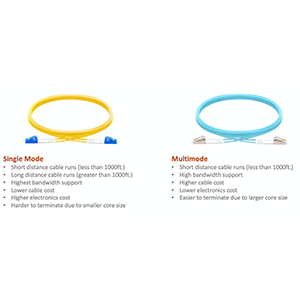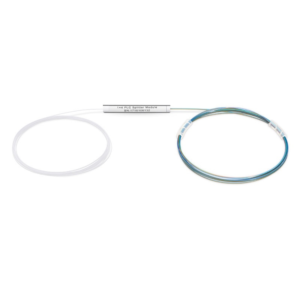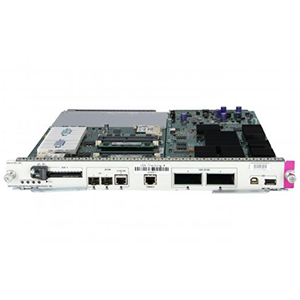Fiber access network plays an important role in contemporary networks. This article will compare the rate characteristics of two mainstream fiber access technologies, EPON and GPON. We will first review the advantages of fiber as an access network transmission medium and briefly introduce the basic principles of EPON and GPON.
Next, we will define the core concepts and specific rate indicators of the two technologies respectively. Then, we will compare the differences between the two technologies in terms of rate and analyze the application scenarios in which they are applicable. Finally, we will summarize the advantages and disadvantages of EPON and GPON in terms of rate characteristics to provide a reference for users to choose the appropriate fiber access technology.
What is fiber access network technology
Fiber access network technology connects the network directly to the user end through optical fiber to provide high-speed and stable Internet services. It includes FTTH (fiber to the home), FTTB (fiber to the building), FTTC (fiber to the street) and other modes. Fiber access network has high bandwidth, low latency and anti-interference capabilities, suitable for home and enterprise broadband services, and supports large-capacity data transmission.
1. Advantages of optical fiber as access network transmission media:
- Large bandwidth:
- Optical fiber can provide extremely high information transmission bandwidth to meet users’ needs for high-speed networks.
- Anti-interference:
- Optical fiber transmission is not affected by electromagnetic interference, and the signal quality is stable and reliable.
- Long transmission distance:
- Optical fiber can achieve long-distance signal transmission, which is suitable for the coverage requirements of access networks.
- High security:
- Optical fiber cables will not leak signals and have high security.
2. Basic principles of EPON and GPON:
- Both are based on passive optical network architecture:
- Both EPON and GPON use passive optical splitters to form optical distribution networks.
- The working mechanisms of EPON and GPON are different:
- EPON is based on Ethernet standards and uses CSMA/CD access.
- GPON uses time division multiplexing technology, TDMA for uplink and broadcast for downlink.
In short, fiber access network technology gives full play to the advantages of fiber transmission media and provides users with high-speed and reliable network access services. As mainstream fiber access technologies, EPON and GPON play an important role in access network deployment. In the future, with the continuous growth of user bandwidth demand, fiber access network technology will further develop and popularize.
The transmission rate of EPON technology
The transmission rate of EPON (Ethernet Passive Optical Network) technology is 1Gbps downstream and 1Gbps upstream. It realizes fiber access of Ethernet services through a passive optical distribution network and supports the transmission of data, voice and video. EPON technology has high bandwidth, low latency and high transmission efficiency, and is suitable for fiber to the home (FTTH) and enterprise networks.
1. The core concept and working mechanism of EPON technology:
- Using Ethernet data frame transmission:
- EPON is based on the Ethernet standard and uses Ethernet data frames for transmission.
- Support 1Gbps upstream and downstream:
- EPON can provide 1Gbps symmetrical upstream and downstream bandwidth.
2. EPON’s specific rate indicators:
- Upstream 1Gbps, downstream 1Gbps:
- EPON’s upstream and downstream transmission rates are both 1Gbps.
- Single-fiber bidirectional parallel transmission:
- EPON uses wavelength multiplexing technology to achieve upstream and downstream parallel transmission on the same optical fiber.
In general, EPON technology can provide 1Gbps high-speed symmetrical access capability. Through bidirectional parallel transmission of a single optical fiber, it effectively utilizes optical fiber bandwidth resources to provide users with high-speed and stable broadband access services.
These performance indicators of EPON meet the current needs of most home and enterprise users for high-speed broadband. With the continuous growth of bandwidth demand in the future, EPON technology will also continue to upgrade and evolve to meet higher-speed transmission requirements.
Transmission rate of GPON technology
GPON (Gigabit Passive Optical Network) technology has a transmission rate of 2.5Gbps downstream and 1.25Gbps upstream. It provides high-bandwidth services through a passive optical distribution network and supports high-speed Internet, voice and video transmission. In fiber-to-the-home (FTTH) applications, GPON technology can meet high data transmission requirements and provide stable network connections.
1. The core features of GPON technology:
- Time division multiplexing for uplink and downlink transmission:
- GPON uses time division multiplexing technology to achieve uplink and downlink transmission on the same optical fiber.
- Support higher transmission bandwidth:
- Compared with EPON, GPON can provide higher transmission bandwidth.
2. Specific rate parameters of GPON:
- Uplink 1.25Gbps, downlink 2.5Gbps:
- GPON has an uplink transmission rate of 1.25Gbps and a downlink transmission rate of 2.5Gbps.
- Optional 2.5Gbps/1.25Gbps bidirectional:
- GPON also supports symmetrical bidirectional transmission of 2.5Gbps/1.25Gbps.
In general, GPON technology has obvious advantages in transmission rate. The bandwidth performance of 1.25Gbps upstream and 2.5Gbps downstream can better meet the user’s demand for high-speed broadband access. At the same time, GPON also supports symmetrical bidirectional transmission of 2.5Gbps/1.25Gbps, providing users with more flexible configuration options.
These performance advantages make GPON the mainstream technology of fiber access network, which is widely used in FTTH and other scenarios, bringing users a better network experience. As users’ demand for bandwidth continues to increase in the future, GPON technology will continue to upgrade and iterate to meet the growing network demand.
Comparative analysis of EPON and GPON rates
The transmission rate of EPON technology is 1Gbps downstream and 1Gbps upstream, while that of GPON technology is 2.5Gbps downstream and 1.25Gbps upstream. GPON is superior to EPON in terms of rate and is suitable for applications with higher bandwidth requirements. EPON is more suitable for medium bandwidth requirements and has a lower technical cost. The choice should be made based on specific needs and budget.
1. The difference between the two technologies in terms of rate:
- GPON has a higher downstream rate than EPON:
- GPON has a downstream rate of 2.5Gbps, while EPON has a downstream rate of 1Gbps.
- GPON has higher upstream and downstream rates than EPON:
- GPON has an upstream rate of 1.25Gbps, which is significantly higher than EPON’s 1Gbps.
2. Application scenarios of the two technology rate characteristics:
- EPON is suitable for medium and low bandwidth users:
- EPON’s 1Gbps symmetrical rate is more suitable for users with medium and low bandwidth requirements.
- GPON is more suitable for high-bandwidth users:
- GPON has higher upstream and downstream rates, which is more suitable for the needs of high-bandwidth users.
In general, GPON is significantly better than EPON in terms of rate performance. GPON’s downstream 2.5Gbps and upstream 1.25Gbps bandwidth capabilities can better meet users’ needs for high-speed broadband. EPON is more suitable for medium and low bandwidth application scenarios.
According to actual user needs and network deployment environment, choosing EPON or GPON as the fiber access technology can ensure network performance and user experience. With the continuous upgrading of user bandwidth demand in the future, GPON will become more and more popular with its stronger rate capability.
Summary
Choosing the right fiber access technology is the key to ensuring the performance of broadband access networks. Our company has long focused on the research and development and application of optical communication products and has rich practical experience. We provide a full range of EPON and GPON equipment products to meet the needs of different access network scenarios.
Our products use industry-leading technical solutions and have achieved excellent levels in transmission performance, reliability and manageability. At the same time, our engineering team will provide you with professional demand analysis and solution design services to ensure that the deployed fiber access solutions can meet your actual needs to the greatest extent. Contact us now to learn more.
EPON and GPON speed FAQ
EPON supports a maximum speed of 1 Gbps for downstream and 1 Gbps for upstream data transmission.
GPON can provide up to 2.5 Gbps for downstream and 1.25 Gbps for upstream data transmission.
GPON generally offers higher downstream speeds (2.5 Gbps) compared to EPON (1 Gbps), making it suitable for higher bandwidth applications.
Yes, both EPON and GPON have advanced versions, such as 10G-EPON and XG-PON, which offer higher speeds of up to 10 Gbps.
Factors include the number of users sharing the bandwidth, network configuration, distance from the central office, and equipment used.
Yes, both technologies can be upgraded to newer standards, allowing for increased speeds through newer equipment and configurations.
GPON is more commonly used for residential broadband services due to its higher speeds and proven reliability.
Both EPON and GPON typically have low latency; however, GPON may have slightly lower latency due to its efficient data handling.
Generally, GPON systems can be more expensive to deploy due to their advanced technology and higher performance capabilities.
GPON is usually the preferred choice for businesses with high bandwidth needs because of its superior speed and capacity.




